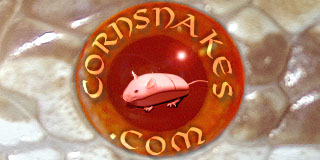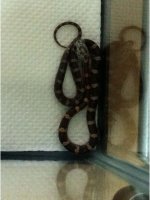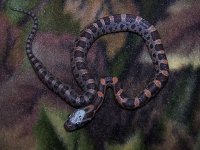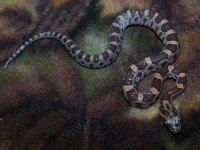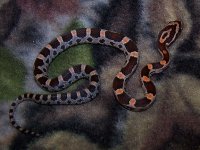-
Hello!
Either you have not registered on this site yet, or you are registered but have not logged in. In either case, you will not be able to use the full functionality of this site until you have registered, and then logged in after your registration has been approved.
Registration is FREE, so please register so you can participate instead of remaining a lurker....
Please be certain that the location field is correctly filled out when you register. All registrations that appear to be bogus will be rejected. Which means that if your location field does NOT match the actual location of your registration IP address, then your registration will be rejected.
Sorry about the strictness of this requirement, but it is necessary to block spammers and scammers at the door as much as possible.
You are using an out of date browser. It may not display this or other websites correctly.
You should upgrade or use an alternative browser.
You should upgrade or use an alternative browser.
Is this normal?
- Thread starter gayal
- Start date
DMong
colubrid connoisseur
No, that's not normal at all. Something very abnormal going on there!
If the parents both had the bloodred (diffused) gene, I would say it might be caused by that gene, but the parents aren't from what you state and snake itself doesn't seem to be either. The photo is pretty grainy and unclear, but aren't a couple saddle blotches at the very bottom also lacking some pigment? Are the head scales otherwise smooth and normal looking?. It looks almost wrinkled, but it's really tough to make out in the pic.
~Doug
If the parents both had the bloodred (diffused) gene, I would say it might be caused by that gene, but the parents aren't from what you state and snake itself doesn't seem to be either. The photo is pretty grainy and unclear, but aren't a couple saddle blotches at the very bottom also lacking some pigment? Are the head scales otherwise smooth and normal looking?. It looks almost wrinkled, but it's really tough to make out in the pic.
~Doug
DMong
colubrid connoisseur
What did you use to incubate the eggs in?
I was wondering about that too.
Could be a "Silver Vermiculite Head" morph (SVH) :laugh:
I used vermiculite. It did cross my mind that it was vermiculite that was stuck on it but after washing and cleaning the snake, the color stayed. Besides, the other Classic hatchlings in this batch all have normal colored heads. Here are 2 clearer pics. What do you guys think?
http://s240.photobucket.com/albums/...eecorn/?action=view¤t=WhiteheadPic1.jpg
http://s240.photobucket.com/albums/...eecorn/?action=view¤t=WhiteheadPic2.jpg
http://s240.photobucket.com/albums/...eecorn/?action=view¤t=WhiteheadPic1.jpg
http://s240.photobucket.com/albums/...eecorn/?action=view¤t=WhiteheadPic2.jpg
Susan
Go Ahead, Make My Day!
It is something that happens sometimes in newly hatched corns. It will go away once the snake sheds. These are some from last year. I don't have a post-shed photo of the first hatchling, but posted one of the second one.
Attachments
DMong
colubrid connoisseur
It could very well go away and become normally pigmented after a few sheds, and then again it's very possible it will not. Yes, sometimes snakes and many other animals can have undeveloped pigment(s) in scattered flecks and patches, as well as on the head as Susan's did, but any number of things can be the cause/reason for it. I have also seen many types of snakes become far MORE "piebald" or extensively freckled as they matured as well. To anyone thinking that they know everything about the countless possibilities, and exactly how chromatophores (pigment cells) always operate (or don't operate), I strongly suggest they read every single word of just this one "simple" link. Then afterwards try to convince themselves of exactly how much they really know about pigment cell biology and how these cells always function (or don't function)..........
http://vetherppath.hubpages.com/hub/Understanding-Reptile-Color-and-Correct-Color-Terminology
Here is another link to ponder just in case they made it through the first one without having a brain hemorrhage.
http://www.webexhibits.org/causesofcolor/7I.html
Bottom line is there can sometimes be more possibilities than there are stars in the galaxies.
I would like to know how many forum members here took the time to actually read every word (or even most) of just one of the above links. I say this because after doing so, you will have an entirely different outlook on what you ever "thought" you knew before regarding the endless color morphs there are in the hobby. Certainly not just cornsnakes either.
cheers, ~Doug
http://vetherppath.hubpages.com/hub/Understanding-Reptile-Color-and-Correct-Color-Terminology
Here is another link to ponder just in case they made it through the first one without having a brain hemorrhage.
http://www.webexhibits.org/causesofcolor/7I.html
Bottom line is there can sometimes be more possibilities than there are stars in the galaxies.
I would like to know how many forum members here took the time to actually read every word (or even most) of just one of the above links. I say this because after doing so, you will have an entirely different outlook on what you ever "thought" you knew before regarding the endless color morphs there are in the hobby. Certainly not just cornsnakes either.
cheers, ~Doug
DMong
colubrid connoisseur
Very interesting!
Yes, it sure is. For many years now I have found that the more I learn, the less I actually know.
Certain things are very simple and straight-forward, while other things are insanely complex with endless possible variables.
~Doug
